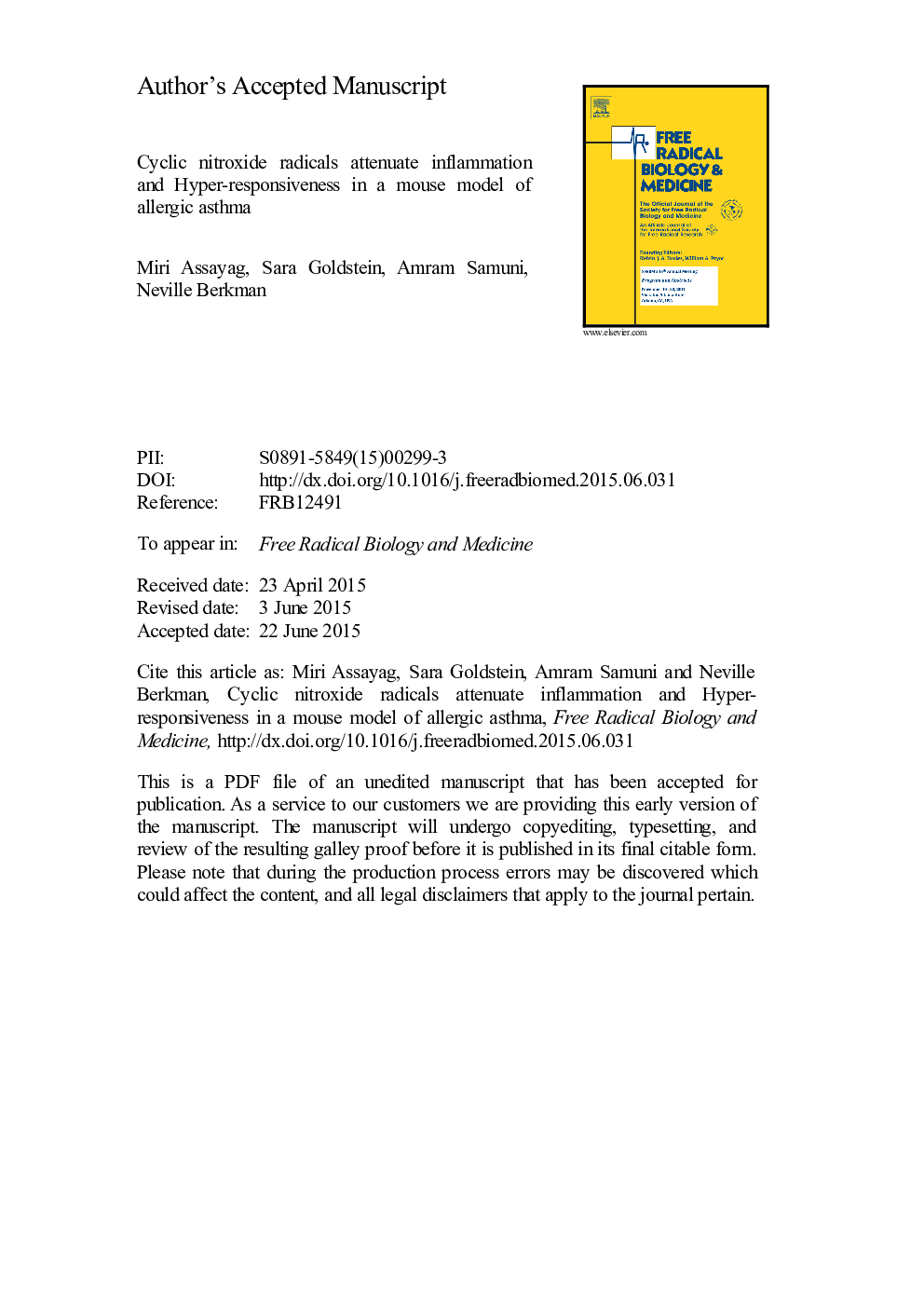| Article ID | Journal | Published Year | Pages | File Type |
|---|---|---|---|---|
| 8268723 | Free Radical Biology and Medicine | 2015 | 32 Pages |
Abstract
The effects of stable cyclic nitroxide radicals have been extensively investigated both in vivo and in vitro demonstrating anti-inflammatory, radioprotective, anti-mutagenic, age-retardant, hypotensive, anti-cancer and anti-teratogenic activities. Yet, these stable radicals have not been evaluated in asthma and other airway inflammatory disorders. The present study investigated the effect of 4-hydroxy-2,2,6,6-tetramethyl-piperidine-N-oxyl (TPL) and 3-carbamoyl-proxyl (3-CP) in a mouse model of ovalbumin (OVA)-induced allergic asthma. Both 3-CP and TPL were non-toxic when administered either orally (1% w/w nitroxide-containing chow) or via intraperitoneal (IP) injection (â¼300Â mg/kg). Feeding the mice orally demonstrated that 3-CP was more effective than TPL in reducing inflammatory cell recruitment into the airway and in suppressing airway hyper-responsiveness (AHR) in OVA-challenged mice. To characterize the optimal time-window of intervention and mode of drug administration, 3-CP was given orally during allergen sensitization, during allergen challenge or during both sensitization and challenge stages, and via IP injection or intranasal instillation for 3 days during the challenge period. 3-CP given via all modes of delivery markedly inhibited OVA-induced airway inflammation, expression of cytokines, AHR and protein nitration of the lung tissue. Oral administration during the entire experiment was the most efficient delivery of 3-CP and was more effective than dexamethasone a potent corticosteroid used for asthma treatment. Under a similar administration regimen (IP injection before the OVA challenge), the effect of 3-CP was similar to that of dexamethasone and even greater on AHR and protein nitration. The protective effect of the nitroxides, which preferentially react with free radicals, in suppressing the increase of main asthmatic inflammatory markers substantiate the key role played by reactive oxygen and nitrogen species in the molecular mechanism of asthma. The present results demonstrate the therapeutic potential of nitroxides for the treatment of asthma.
Keywords
Related Topics
Life Sciences
Biochemistry, Genetics and Molecular Biology
Ageing
Authors
Miri Assayag, Sara Goldstein, Amram Samuni, Neville Berkman,
